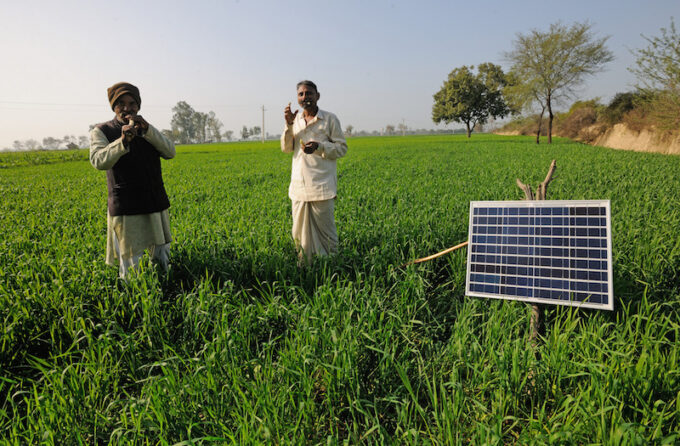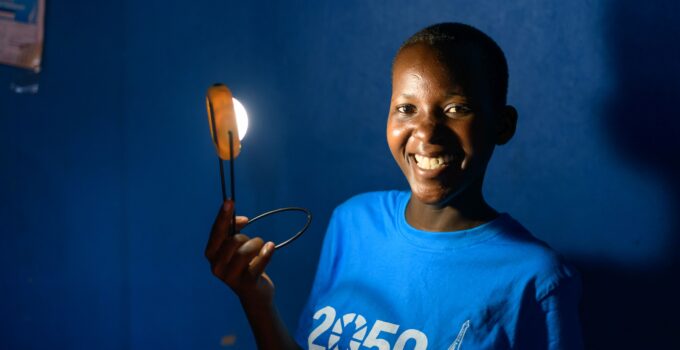The 2050 Paris Solar Lamp Project, a key initiative under the larger 2050 Paris Programme, represents a groundbreaking effort to address global sustainability challenges. This project is driven by the urgency of climate change and the critical need for renewable energy solutions.
It aims to transform lives and environments through the distribution of solar-powered lamps, particularly in areas where access to electricity is limited or non-existent. The vision of the project is not only to provide light but also to spark a wider movement towards environmental responsibility and sustainable living.
Understanding the Need for Sustainable Lighting
In many parts of the world, especially in underdeveloped and remote areas, traditional lighting methods like kerosene lamps and candles are still in use. These methods are not only inefficient but also harmful to both the environment and human health.
They emit significant amounts of carbon dioxide and other pollutants, contributing to air pollution and the greenhouse effect. The need for sustainable lighting solutions is urgent, and this is where the 2050 Paris – Solar lamp project in Africa steps in, offering a viable, eco-friendly alternative that has far-reaching benefits.
The Environmental Impact of Solar Lamps

Source: glydesolar.com
Solar lamps are a game-changer in terms of environmental impact. By replacing carbon-emitting traditional lamps, they significantly reduce the carbon footprint of lighting. This reduction in carbon emissions is crucial in the fight against climate change. Additionally, solar lamps mitigate the detrimental effects of non-renewable energy sources on ecosystems, contributing to biodiversity conservation and environmental health.
Health and Safety Improvements
The transition to solar lamps brings substantial health and safety improvements. In contrast to kerosene lamps, which pose fire hazards and emit toxic fumes, solar lamps are safe and clean. They improve air quality, reducing the risk of respiratory diseases and other health issues associated with poor indoor air quality. This aspect of the project has a profound impact on the quality of life, particularly in densely populated areas and households with limited ventilation.
Enhancing Education and Quality of Life

Source: varthana.com
Lighting is a fundamental element of education. In regions lacking electricity, solar lamps extend learning opportunities beyond daylight hours. They enable children and adults to read, study, and engage in educational activities at night, thus contributing to literacy and education. This access to light after dark not only enhances educational outcomes but also improves overall quality of life, enabling individuals to perform various tasks and engage in community activities in the evenings.
Empowering Communities Through Clean Energy
The distribution of solar lamps and solar panels is a step towards energy democratization. It empowers communities by providing them with an independent, reliable, and renewable source of energy. This empowerment leads to numerous socio-economic benefits, including increased productivity, extended working hours for small businesses, and the fostering of local economies. Moreover, it instills a sense of ownership and responsibility towards sustainable energy use in communities.
Economic Benefits and Sustainability

Source: treehugger.com
The economic implications of adopting solar lamps are significant. Families save on fuel expenses, which can be redirected toward other essential needs. Furthermore, the durability and low maintenance of solar lamps make them a cost-effective lighting solution in the long term. This shift towards a more sustainable mode of lighting not only alleviates financial burdens on households but also promotes sustainable economic development at the community level.
The Role of Carbon Credits in the Project
A unique aspect of the 2050 Paris Solar Lamp Project is its integration with the carbon credit system. By replacing traditional lamps with solar ones, the project generates carbon credits, representing a quantifiable reduction in carbon emissions. These credits are then sold on the voluntary carbon market, generating funds that are reinvested into the project. This creates a sustainable financial model, ensuring the project’s longevity and expansion.
Global Reach and Impact

Source: solar-aid.org
The project’s ambition extends beyond local impact to global reach. It aims to distribute one million solar lamps by 2030, significantly contributing to worldwide sustainability efforts. This global reach not only addresses the immediate need for lighting in underprivileged areas but also serves as a model for large-scale renewable energy projects, demonstrating the potential for widespread adoption of sustainable practices.
Community Engagement
Community engagement is a cornerstone of the project’s success. It actively involves local communities in the deployment and maintenance of solar lamps. This approach not only empowers individuals but also fosters a sense of ownership and responsibility. Communities benefit from improved lighting, which enhances safety and extends the hours for education and economic activities. This community-centric approach ensures that the project’s impact goes beyond illumination.
Funding and Support

Source: visitplymouth.co.uk
The 2050 Paris Solar Lamp Project relies on a blend of funding sources to fuel its mission. It has garnered support from both government initiatives and non-governmental organizations committed to sustainability.
These partnerships provide the project with the necessary resources to expand its reach and accelerate the adoption of solar lamps. The collective effort to fund this endeavor highlights the global commitment to sustainable lighting solutions.
Progress and Achievements
As of today, the project has made significant strides in its mission. Milestones include the distribution of millions of solar lamps to communities in need, reducing carbon emissions, and alleviating energy poverty in various regions. These achievements underscore the project’s efficacy and its ability to catalyze positive change on a global scale.
Challenges and Solutions

Source: blogs.adb.org
While the path to sustainability is paved with promise, it is not without its challenges. The 2050 Paris Solar Lamp Project faces obstacles such as initial implementation costs, technical limitations in some areas, and resistance to change.
However, innovative financing models, ongoing technological advancements, and targeted awareness campaigns are among the solutions employed to overcome these hurdles. The determination of the project’s stakeholders ensures that these challenges are met with resilience and creativity.
Future Outlook
The future of sustainable lighting, as envisioned by the 2050 Paris Solar Lamp Project, is indeed bright. By 2050, the project aims to have solar lamps illuminate the lives of billions, reducing carbon emissions and promoting a sustainable way of life. This future promises not only cleaner air and a healthier planet but also increased access to education, improved safety, and economic opportunities for all.
In conclusion, the 2050 Paris Solar Lamp Project represents a beacon of hope in the pursuit of sustainability. By harnessing the power of the sun and engaging communities worldwide, it offers a tangible path toward a brighter and more sustainable future. As we look ahead, it is clear that the vision behind this project has the potential to transform the way we light our world, one solar lamp at a time.







